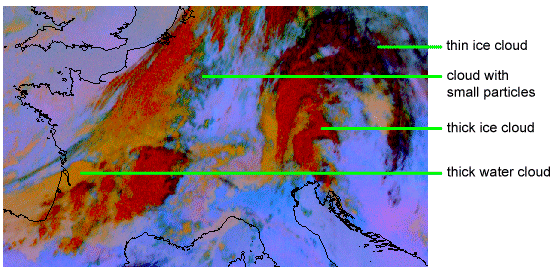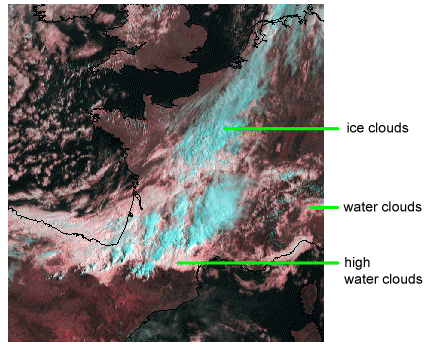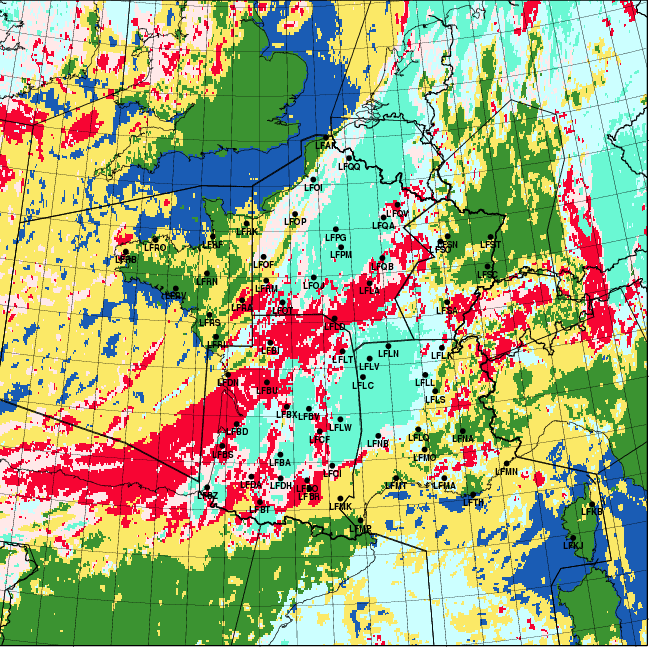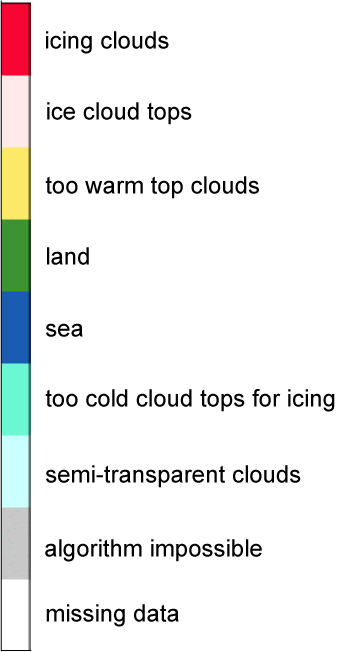Seviri images
Seviri images are mostly used as RGB (red-green-blue) composites. In this method three channels or channel differences are combined to reveal information that cannot be seen in single channels. For more information about RGB, see Eumetsat's RGB Guide:
http://oiswww.eumetsat.org/WEBOPS/msg_interpretation/index.php
The most useful day and night Seviri product for detecting possible icing clouds is Microphysical. During daytime the most useful product is HRVFog.
Microphysical (infrared channels)
- Difference IR12.0 - IR10.8 (phase and optical thickness)
- Difference IR10.8 - IR8.7 (phase and optical thickness)
- Channel IR10.8 (top temperature)
Interpretation of the images:
Fig. 3.6. Microphysical combination
Water clouds without ice clouds above them can be seen as yellow-orange; the deeper the color, the thicker the cloud. When combined with temperature data, the image can reveal a potential icing cloud.
HRVFog (solar)
In this product the key channel for detecting icing is NIR1.6. In addition, the HRV (High Resolution Visible) channel brings a better resolution to the image. The name of the combination comes from the fact that it is used for detecting fog/low stratus and snow. The darker the pinkish water cloud is, the lower it is. High water clouds appear light pinkish.
- Channel NIR1.6 (phase)
- Channel HRV 0,5…0,9µm
- Channel HRV 0,5…0,9 µm
Fig 3.7. HRVFog combination
Artificially colored images
In many NMS's the Seviri images are converted into artificially colored images to emphasize certain features. These procedures combine data from several satellite channels, nwp output and observations. An example of this kind of interpretation product is Meteo France's Ice Cloud Product ICLD, where the potential icing clouds are shown red:
Fig. 3.8. ICLD product from Meteo France, with color scale



